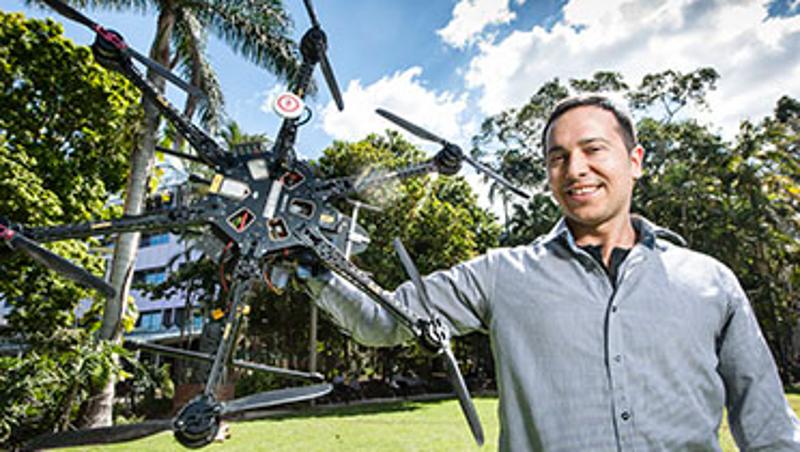
QUT is the Queensland lead in a new international biosecurity research program involving unmanned aerial systems (UAS).
Under the three-year project UA (unmanned aircraft) will be fitted with new high-tech imaging equipment to test how effective they are in identifying pests and diseases in horticultural and grains industries.
Australia's Plant Biosecurity Cooperative Research Centre (PBCRC) is providing $1.74 million towards the new $6.5 million project, Optimising Surveillance Protocols Using Unmanned Aerial Systems.
The project will be led by CRC participants at Kansas State University (K-State), with QUT and the Victorian Department of Environment and Primary Industries as research partners.
QUT UAS project leader Dr Felipe Gonzalez said the university's proven track record in relation to UAS and plant biosecurity cemented its place in the project.
"It's very timely and a great opportunity to create the next generation of surveillance and UA for plant pest detection," Dr Gonzalez said.
Dr Gonzalez said QUT would develop new surveillance protocols and advanced software for existing high-tech imaging equipment (hyperspectral and multispectral) that would pinpoint pests such as Stripe Rust found in wheat and Myrtle Rust currently threatening horticulture as well as native plants such as tea tree and bottle brush.
"We hope to show that the use of UA in detecting pests is both accurate and cost effective; that they enable more territory to be covered more cheaply and detect more pests," he said.
"Pest surveillance in forest land in particular can be very dangerous in a conventional helicopter and the use of UA will enable us to fly closer so the imaging technology can be used to full advantage.
"Early detection and monitoring of harmful plant pest or disease incursions is time consuming but extremely important for plant biosecurity."
Other QUT researchers involved in the project include Dr Grant Hamilton and Professor Duncan Campbell.
Dr Grant Hamilton, a specialist in analysing pests and invasive species, is responsible for using UASs to detect Yellow Stripe Rust in wheat crops.
"Part of detecting pests is to understand when they are likely to be there," he said.
"We aim to incorporate these new technologies with better predictions, so ultimately farmers will have a cost effective way to detect pests."
Dr Gonzalez said the project would also enable researchers to determine the optimal flying distance from target plants to enable better detection rates and the best image quality.
Professor Duncan Campbell, who is the director of the QUT-led Australian Research Centre for Aerospace Automation said the project had enormous potential to further knowledge of UAS technology.
He said Kansas State University in the US would target Russian Wheat Aphid and Wheat Stripe Rust and that the collaboration between the universities would have significant benefits to the aerospace and agricultural industries.
Media contact: Rose Trapnell, QUT media team leader, 07 3138 2361 or 0407 585 901 rose.trapnell@qut.edu.au


